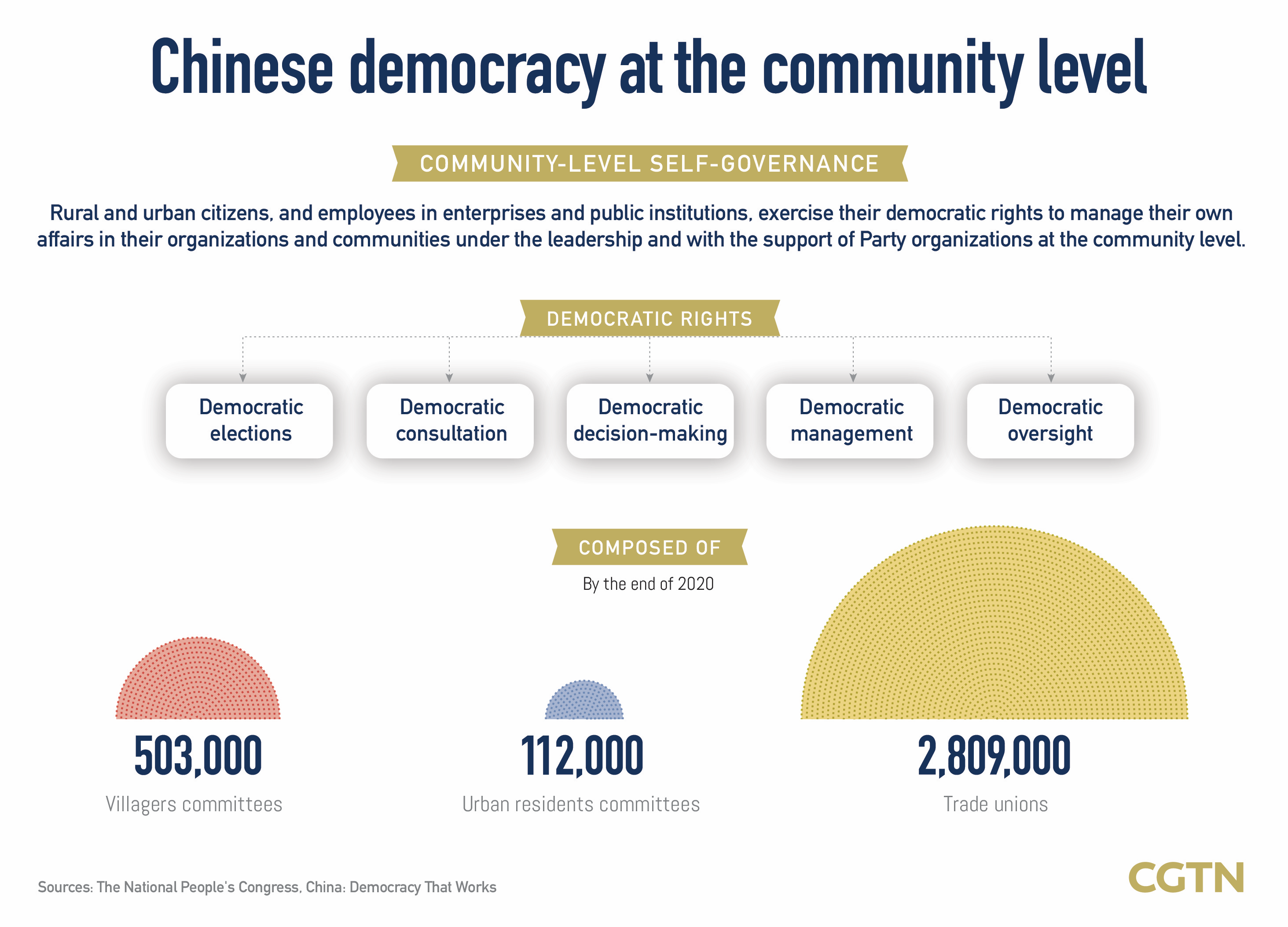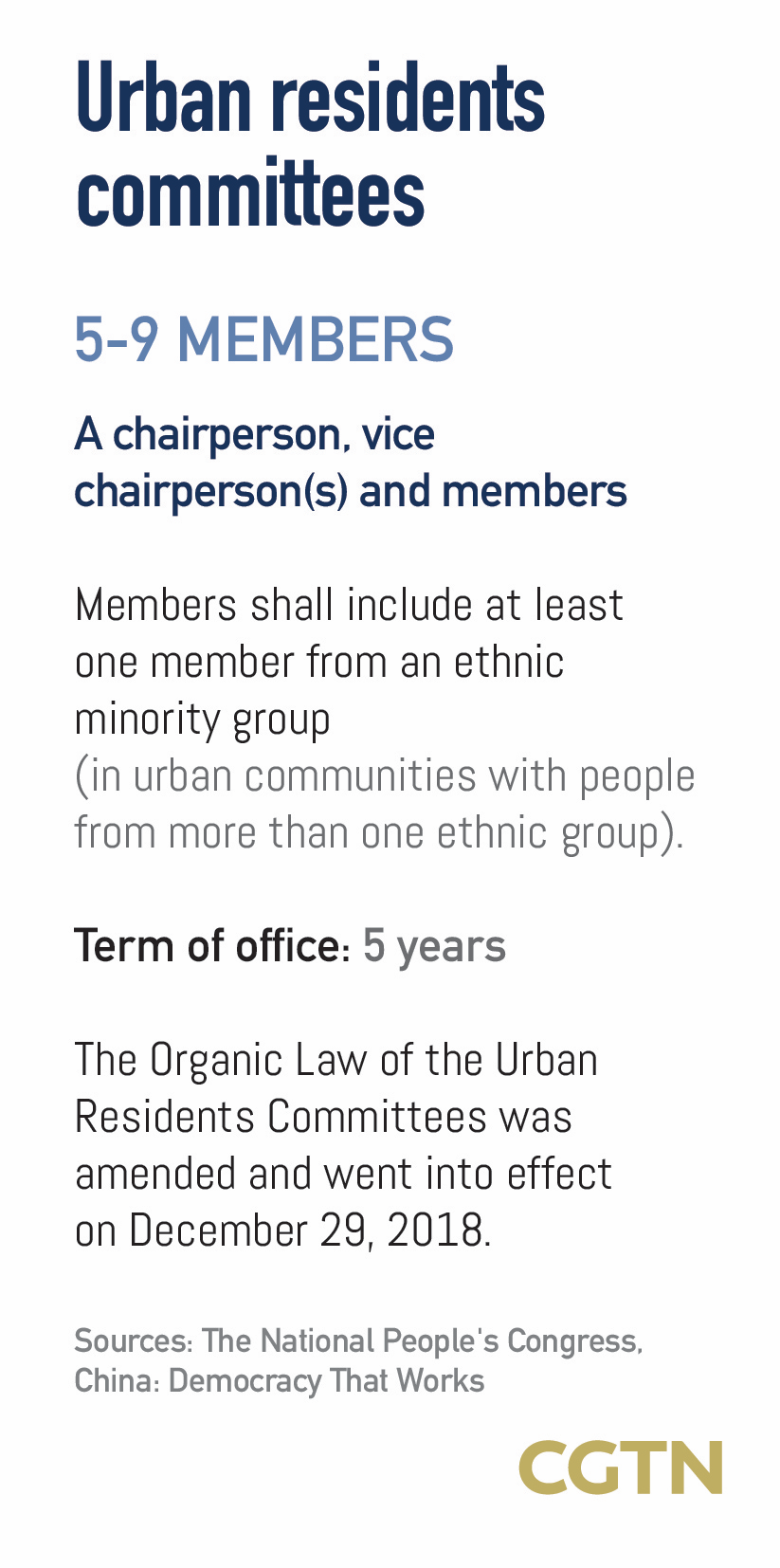Auntie Zeng, a retired teacher living in Zhuhai, south China's Guangdong Province, always feels she has a say in the residential community she lives in and can push through changes, thanks to the grassroots self-governance system in China.
In her community, the residents committee, which was elected by the residents, has put up a "wishing wall" for them to write down their opinions and suggest changes. If their ideas get picked, the committee will host meetings for the residents to participate in decisions through voting.
It was through this mechanism that Zeng pushed through a community park renovation plan that she and other residents were looking forward to, and got to enjoy a better living environment.
Ensuring the enjoyment of democratic rights for citizens at the grassroots level in a country as vast as China, with over 1.4 billion people and a geographic area of approximately 9.6 million square kilometers, is a significant challenge.
China's answer is a system called community-level self-governance, which is represented by villager autonomy in rural areas, urban resident autonomy in urban areas, and employee congresses in enterprises and public institutions.
The system is designed to enable residents and employees at the grassroots level to exercise their democratic rights in managing their own affairs within their communities and organizations.
It has proved to be effective in providing individuals with tangible power, which has prevented situations where people hold power only in theory but lack practical means of exercising it.

Residents committees represent interests of diverse population
In villages in rural areas and communities in urban areas, residents nominate and elect members of their committees, and then manage community-level public affairs and welfare through the committees.
The residents first nominate candidates, then vote via secret ballot and open-counting, and the results are announced on the spot. The committee members must be diverse and can represent the interests of people from different groups of the population.
Take a villager committee as an example. One committee usually contains three to seven members, with at least one female member and one member from an ethnic minority group, given that the village has residents from more than one ethnic group.
In 1987 and 1989, the sixth and the seventh National People's Congress (NPC) Standing Committee respectively issued the Organic Law of the Villagers Committees and the Organic Law of the Urban Residents Committees, stipulating that the chairperson, vice-chairperson(s) and members of the committees shall be directly elected by the people. Before that, they were appointed by higher levels of governments. The change marked a major development in China's grassroots democratic political system.
The following graphics show the election processes of villagers committees and urban residents committees.


After a villagers committee or an urban residents committee has been elected, the residents can carry out democratic consultations on local affairs in various forms, and practice democratic decision-making in handling community issues and public services through committee meetings and congresses.
They can also exercise democratic oversight. The residents elect village and urban community affairs oversight committees to supervise the handling of their community affairs and guarantee information disclosure.
As of the end of 2020, all the 503,000 administrative villages in China had established villagers committees, and all the 112,000 urban communities in the country had established residents committees.
Trade union committees protect employees' rights
There is another type of community-level self-governance that operates at the level of employees in enterprises and public institutions, which practice a democratic management system with the employees congresses as the basic form, so that workers and staff can play an active role in major decisions and significant matters that affect their interests.
Corporate trade union committees are the operating mechanism of employees congresses. As of 2021, there had been 2.81 million primary-level trade unions in China, covering 6.551 million enterprises and public institutions.
The following graphic shows how trade union committees function in China.

Enterprises and public institutions also employ a system featuring employees' open access to enterprise affairs and are experimenting with practices that include open days to communicate with leaders, employee-employer consultations, and letters and messages to senior executives.
These efforts are designed to help learn about the demands of the employees, mediate labor relations and protect the legitimate rights and interests of the employees. Meanwhile, employees can provide suggestions on how to improve production and management of the companies.
The mechanism of community-level self-governance in China is the most vivid practice of whole process people's democracy, and greatly enhanced the effectiveness of social governance at the community level, said Xia Haiyan, associate professor at the Nanjing University of Information Science and Technology, in a report in Guangming Daily in November 2022.